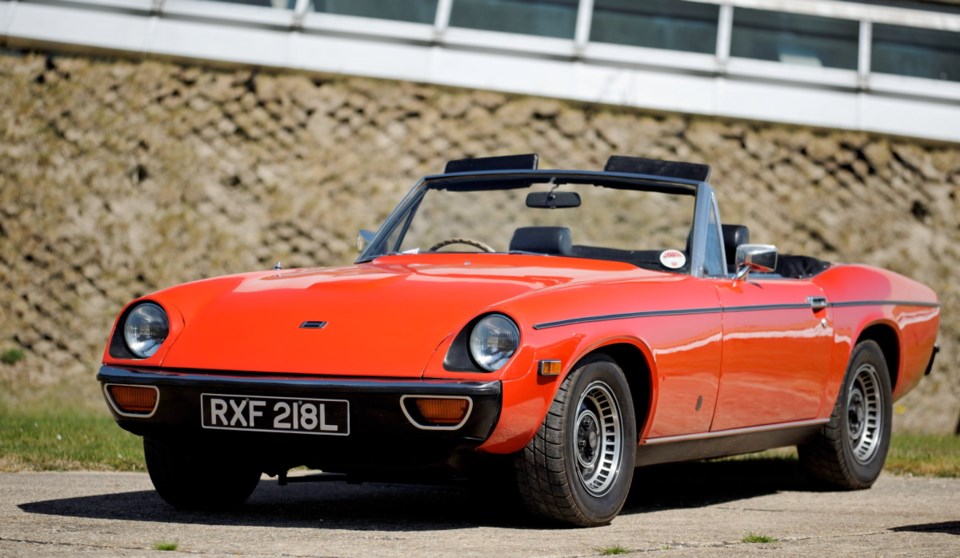Donald Healey could be called a natural engineer, a man with an innate mechanical talent. His engineering training, natural ability and initiative resulted in his name being carried on several cars. Our subject is the last one.
Donald Healey grew up in the Cornish town of Perranporth, and after serving in the First World War came home to open an auto repair shop.
Healey participated in motor sports and improving his driving techniques in his own specials, usually powered by Ford V-8 engines. He became skilled enough to win the 1931 Monte Carlo Rally driving an Invicta, and based on his experience and engineering expertise, Triumph Motor Co. of Coventry hired him as technical director.
Following the Second World War, during which bankrupt Triumph was purchased by Standard, Healey and his son, Geoff, established the Donald Healey Motor Co. in Warwick in 1946. It built a number of well-regarded cars with mostly Riley and Austin engines, including reputedly the world’s fastest production car.
In the early 1950s, they developed the Healey Hundred sports car, which British Motor Corporation adopted to become the very popular Austin-Healey.
Healey also teamed up with Nash Motor Co. in the United States on the attractive Nash-powered Nash-Healey sports car.
The Healey-designed tiny BMC Austin-Healey Sprite, introduced in 1958, became a favourite entry-level sports car.
By 1968, British Leyland, now Austin-Healey’s parent, decided to discontinue their aging sports car. Although Donald Healey was now 70, he was determined to return to the automobile business.
He contacted an acquaintance, wealthy transplanted Norwegian Kjell Qvale (shell cuv-all-ee), British Leyland’s San Francisco distributor, who had found himself without Austin-Healeys to sell.
With Qvale’s money and Healey’s ingenuity they joined forces to produce an Austin-Healey replacement. The A-H’s unitized body was built by Jensen Motors of West Bromwich, Staffordshire, but with the Austin-Healey’s demise, the Jensen brothers put the company up for sale.
In 1970, Qvale became Jensen’s majority shareholder and appointed Healey as chairman. They began designing the Austin-Healey’s replacement Jensen-Healey.
The Jensen-Healey was a two-passenger unit-construction roadster with projected performance higher than the A-H. Jensen would assemble it using mechanical components from outside suppliers.
After considering several engines, they chose a new Lotus two-litre (1,973 cc) double-overhead cam, aluminum 140 horsepower four. It had a Sunbeam Rapier four-speed transmission and was powerful enough for the desired performance.
They used Vauxhall A-arm-and-coil-spring front suspension and solid rear axle with coil springs, trailing links and control arms. Steering was rack-and-pinion and brakes were disc front and drum rear.
Styling was pleasant, with a 2337 mm (92 in.) wheelbase and length of 4115 mm (162 in.). Its hood sloped to the bumper, and admitting cooling air under the bumper eliminated a grille.
Headlamps were set back in “sugar scoops” and the tail was chopped off vertically. The snug roadster had front vent-wings, wind-up windows and a folding top that would prove awkward.
Sales began in mid-1972 with Road & Track (12/72) reporting “excellent roadholding,” although with some “pronounced cowl shake,” suggesting more bracing was required. Performance of the 953-kg (2,100 lb) roadster was good, with zero to 97 km/h (60 mph) in 8.1 seconds and a top speed of 193 km/h (120 mph). Its competitive handling and speed were destined to give Jensen-Healeys many competition successes.
There were some initial quality and engine problems, but production ramped up with approximately 700 built in 1972, almost 4,000 in ’73 and more than 4,500 in ’74, its best year. But despite such upgrades as a five-speed transmission, higher axle ratio and trim enhancements, 1975 sales sank to 1,300.
Recovery was tried by adding a small station wagon version with a hatch-type rear window and minimal rear seat, a la the Volvo 1800 ES. It was called the Jensen GT, not Jensen-Healey, because Healey and Qvale had parted ways in 1974 following a disagreement over finances.
The little Jensen GT station wagon arrived in 1975 and was priced far higher than the Jensen-Healey. The general decline of the company, hastened by labour problems, doomed the Jensen GT to failure; fewer than 500 were built.
The energy crisis of 1973-1974 had virtually killed the Jensen’s big Interceptor model and after just a handful of Jensen-Healeys were produced in 1976, the factory closed its doors.
Donald Healey was disappointed, but surprisingly philosophical at the demise of the last car to bear his name. Although approaching 80, he was eager to develop another car, but it was not to be.
Healey ended his career on this rather unfulfilling note, a comedown for the man whose name had adorned so many popular models. He died in Truro, Cornwall, in 1988 at age 89.
Although the Jensen-Healey was not officially imported into sa���ʴ�ý, some found their way in privately.



